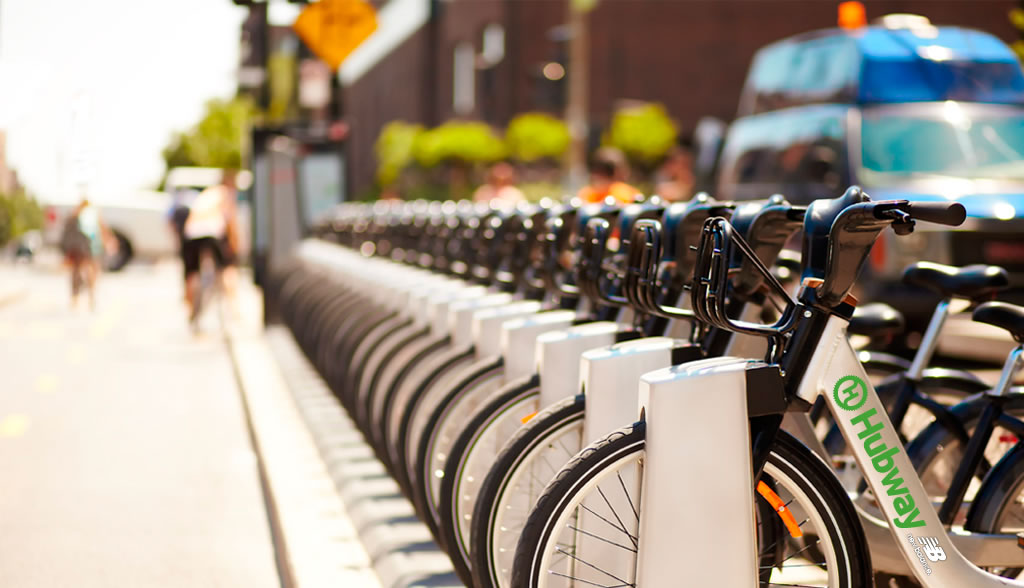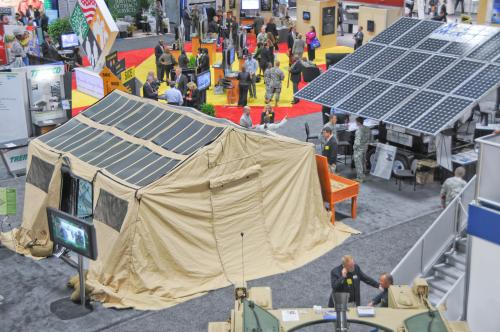With Boston recently ranked as #1 Safest Biking and Walking City in the nation, we decided that in celebration we would revisit one of our most popular blog topics: the Hubway bicycle sharing program. Launched on July 29, 2011 with 60 stations and 600 bicycles, thousands of Boston residents and tourists ditched their dirty driving habits, grabbed a helmet, and joined the movement to turn Boston into one of the healthiest cities in the country. In just five months after its launch, Hubway members took over 142,000 trips across Boston - enough miles to travel from Boston to Los Angeles and back 23 times! These 142,000 trips eliminated 11% of vehicle trips and 42% of public transit trips.
Utility Tracking and Benchmarking Blog | WegoBlog
Tags: Energy efficiency
Whether you want to be a more informed citizen or just want to kill some time before 5 on a Friday afternoon, WegoWise has got you covered. This week we take a look at the less glamorous side of energy, from tarsands to reusing trash. So peruse our best links, give us some feedback and be sure to share some of the info you just gleaned with other interested parties at the parties you are hopefully attending this weekend. Brought to you by Dan, Nate, Sean, Lily, Catherine, and Casey.
Tags: News and Policy, Energy efficiency
WegoWise joined hundreds of attendees at the annual RESNET conference earlier this week in sunny Austin, TX, where we found lots of energy efficiency geeks and gurus, abundant live music, and boots. Lots of boots.
Tags: News and Policy, Energy efficiency, Building science, Water Conservation
News article: USGBC and WegoWise partner for utility tracking
Posted by Casey Diehl on Wed, Feb 29, 2012
In its February 24th issue, the New England Real Estate Journal profiles WegoWise's partnership with the US Green Building Council to provide energy tracking for LEED for Homes multifamily certified buildings. To read more, check out USGBC's Building Performance Partnership and Wegowise's LEED for Homes landing page.
Tags: News and Policy, Energy efficiency, Affordable housing, Building science
Whether you want to be a more informed citizen or just want to kill some time before 5 on a Friday afternoon, WegoWise has got you covered. This week we take a look at ways you can make your home (and bike!) green. So peruse our best links, give us some feedback and be sure to share some of the info you just gleaned with other interested parties at the parties you are hopefully attending this weekend. Brought to you by Dan, Nate, Sean, Lily, Catherine, and Casey.
Tags: Renewables, Energy efficiency
In a time when environmental consciousness is on everyone's minds, the military is being held accountable for their energy foot print; a challenge the military seems to be taking to heart. Energy efficiency has become a primary focus in the administration of military bases.
The Army's first step towards energy efficiency has been implementing net zero bases, which require that they create as much energy as they use by converting buildings to energy efficient facilities and installing solar energy panels, they have also made strides in reducing their energy consumption over all. One way in which the Army has reduced their energy use is by reducing the number of and changing the type of non-tactical fleet vehicles. In 2011 they reduced their non-tactical fleet by 8,000 vehicles. The Army has the largest non-tactical fleet out of all branches of the government and intends to reduce this portion of their vehicles by 20 to 40 percent over five years. Beyond the reduction in non-tactical fleet vehicles, they are looking at the types of vehicles used in these areas, converting to hybrids, high efficiency vehicles or alternative fuel vehicles where possible. The Army is also researching lighter armor and alternative fuel options for combat vehicles, while still trying to maintain the most safety for our troops.
The Navy has installed smart electricity meters in their barracks, which have tighter security requirements. This meter change has given the Navy an energy savings of 5 percent. In addition to tighter monitoring of their bases' electric usage, the Navy has installed 9 million square feet of installation in their temporary structures, cutting fuel consumption by 77,000 gallons of gasoline per day. The Navy has also taken steps to reduce energy consumption on their ships by converting to energy efficient materials and even hybrid engines, as well as installing stern flaps to decrease drag creating more energy efficient ships.
Energy efficiency is the responsibility of all of us. With the U.S. military's combined numbers it could be called the countries fourth largest city. That makes the U.S. military an important tool in moving forward to a more energy efficient America. The U.S. military seems to be listening and taking this task seriously with the steps it has implemented towards energy efficiency so far.
Tags: Renewables, Energy efficiency
The Greener Side of the Fence - Native Plants Landscaping
Posted by Nate Brevard on Tue, Feb 21, 2012
Native plants and grasses in the place of traditional lawns can save resources, cut landscaping costs and significantly reduce pollution.
The Palace of Versailles.
Whether you want to be a more informed citizen or just want to kill some time before 5 on a Friday afternoon, WegoWise has got you covered. This week we take a look at some new nifty technologies and one old-school throwback. So peruse our best links, give us some feedback and be sure to share some of the info you just gleaned with other interested parties at the parties you are hopefully attending this weekend. Brought to you by Dan, Nate, Sean, Lily, Catherine, and Casey.
It's a common occurrence for utility bills to come in, go to accounting, get paid, and be filed away, never to be seen again. A lot of useful data is being filed away, especially in the case of water bills. Even if you take the time to look at your water usage, what does it mean?
Tags: News and Policy, Energy efficiency, Funding














